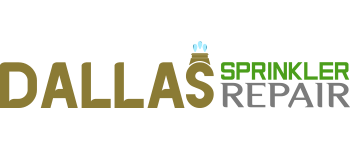Dallas, TX 2025 Water Restrictions
As the Texas heat rises, so does the demand for water. For residents of Dallas, understanding and following the city’s water restrictions is crucial. These guidelines are not just about following rules; they represent a collective effort to conserve our most precious resource. This post will walk you through the 2025 water restrictions in Dallas, explain why they matter, and provide practical tips to help you maintain a beautiful landscape while saving water.
The goal is to ensure a stable and sustainable water supply for our community, both now and in the future. By making small adjustments to our daily routines, we can make a significant impact on water conservation.
Understanding the 2025 Dallas Water Rules
To help manage our water resources effectively, Dallas Water Utilities has established clear guidelines for outdoor water use. These rules are active from April through October, the months when water demand is at its peak. Let’s break down the key restrictions.
Time-of-Day Watering Schedule
One of the most important rules involves when you water. Outdoor irrigation is only permitted before 10 a.m. and after 6 p.m. This simple change has a massive impact. Watering during the cooler parts of the day minimizes water loss due to evaporation from the sun and wind. More water reaches the roots of your plants where it’s needed most, making your efforts more efficient and effective.
Twice-Per-Week Maximum
In addition to the time-of-day rule, residents are limited to a maximum of two watering days per week for automatic sprinkler systems. Your designated watering days are typically based on your address, so it’s a good idea to confirm your specific schedule. This practice encourages deeper, less frequent watering, which helps plants develop stronger, more resilient root systems. A lawn with deep roots is better equipped to handle the stress of summer heat.
Prohibited and Permitted Watering Practices
Knowing what you can and cannot do is essential for compliance. The city has outlined specific prohibitions to prevent water waste.
What Is Not Allowed?
- Watering during rain: It’s common sense, but it’s also a rule. All automatic sprinkler systems must be equipped with functional rain and freeze sensors to prevent watering during or immediately after precipitation.
- Watering hard surfaces: Allowing water to spray onto driveways, sidewalks, or streets is prohibited. This is pure waste and does nothing to benefit your landscape.
- Causing runoff: Your watering should not result in significant runoff flowing into the street or drainage areas. Adjust sprinkler heads and watering duration to ensure the water soaks into the ground.
- Using broken equipment: Leaky or misdirected sprinkler heads must be repaired promptly. A single broken sprinkler head can waste thousands of gallons of water over a season.
What Is Always Permitted?
While sprinkler use is restricted, some methods are allowed at any time because they are highly efficient. These include:
- Watering by hand with a hose that has a positive shut-off nozzle.
- Using a soaker hose.
- Implementing a drip irrigation system.
These methods deliver water directly to the base of the plants, drastically reducing waste from evaporation and runoff. They are excellent choices for garden beds, trees, and shrubs.
Tips for a Healthy Yard Under Restrictions
Following water restrictions doesn’t mean your lawn and garden have to suffer. With a smart approach, you can have a vibrant landscape while being a responsible water user.
Water Deeply, Not Daily
As mentioned, deep and infrequent watering is key. When you do water, aim to apply about one inch of water. This encourages roots to grow deeper into the soil, where they can find more moisture and better withstand dry spells. You can measure your sprinkler’s output by placing a few empty tuna cans around your lawn and timing how long it takes to collect one inch of water.
Choose the Right Plants
Consider incorporating native and drought-tolerant plants into your landscape design. Texas-native plants are naturally adapted to the local climate, meaning they require less water to thrive once established. They are beautiful, low-maintenance, and beneficial for local pollinators. This approach, known as xeriscaping, is a sustainable way to create a stunning yard.
Maintain Your Sprinkler System
Regularly inspect your irrigation system. Look for leaks, broken heads, or nozzles that are clogged or misaligned. Ensure sprinklers are watering your lawn and garden beds, not the pavement. Adjusting your system can save a surprising amount of water and money over the summer.
Mulch is Your Best Friend
Apply a few inches of mulch around trees, shrubs, and in garden beds. Mulch helps the soil retain moisture, reduces evaporation, suppresses weeds that compete for water, and keeps the soil temperature cooler. It’s one of the simplest and most effective water-saving techniques for any gardener.
Let’s Conserve Water Together
The Dallas water restrictions are a vital part of our city’s strategy to manage a finite resource. By each doing our part, we can ensure there is enough water to meet the needs of our growing community. Adhering to these guidelines helps protect our water supply, saves you money on your utility bills, and promotes healthier, more resilient landscapes.
For more detailed information, including your specific watering schedule and additional conservation resources, we encourage you to visit the official Dallas Water Utilities website.

